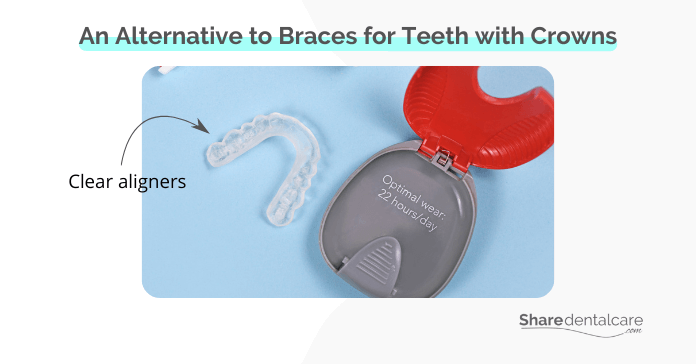Dental braces are a great way to achieve the perfect smile. It is a reliable and proven treatment that can help align teeth and make them look their best. Many people who want to improve their smile ask if it is possible to get braces while there are crowns on their teeth. In this blog post, we will answer this question and mention other orthodontic treatments that can be used to align teeth with crowns.
Can I Get Braces with Crowns on my Teeth?
The answer is yes; it is possible to have braces with crowns on your teeth. Dental braces consist of brackets bonded to the surface of your teeth and connected with an archwire. The wire is tightened periodically over time, creating tension on the teeth and guiding them into alignment. The orthodontist will use a special type of adhesive to attach the braces’ brackets to the crowns, ensuring that they are secure and will stay in place throughout treatment.
Possible Complications
Although it is possible to have braces with crowns on your teeth, some potential complications should be taken into consideration, including:
- Brackets detachment: Brackets adhere more firmly to natural tooth enamel than crowns, which can make them more likely to become detached from the crown. Brackets bonded to the crowns can come loose, leading to treatment delays, and may require additional office visits to be reattached.
- Dental crown damage: Braces can put extra pressure on the crowns, causing them to become damaged over time.
- Edges of crowns become visible: With the movement of the teeth, the edges of dental crowns can become visible. This may cause black lines at the gum line and sensitivity due to the exposure of the underlying vital tooth. You may need to get new crowns after treatment has been completed.
Discussing these and any other potential complications with your orthodontist is essential before opting for braces.
Alternatives to Braces for Teeth with Crowns
While braces can be used to align teeth with crowns, other orthodontic treatments can also be used. Clear aligners, like Invisalign, are a popular alternative to braces. They are custom-made, virtually invisible, removable trays designed specifically for each patient and gradually move the teeth into alignment without the need for metal wires and brackets. It usually takes 12 to 24 months for Invisalign to align overcrowded teeth, depending on the severity of the case.
Clear aligners are more discreet and comfortable than braces and do not require adhesives to adhere to crowned teeth. They are also removable, making them more convenient for brushing and flossing, as well as eating. However, clear aligners may not be suitable for individuals with severely misaligned teeth or complicated cases. In these cases, dental braces may be a better option. Consult an orthodontist about the right option for you; clear aligners or braces for overcrowding.

Braces with Crowns on Teeth – Conclusion
You can have braces with crowns on your teeth, but you should be aware of the possible complications that could arise. For example, the brackets can become loose because they adhere more firmly to natural tooth enamel than crowns; this could lead to treatment delays and additional office visits for reattachment. Clear aligners, like Invisalign, may also be a suitable option for individuals who do not want to use braces. It is important to talk to an orthodontist who can assess your individual needs and determine the best treatment option for you.